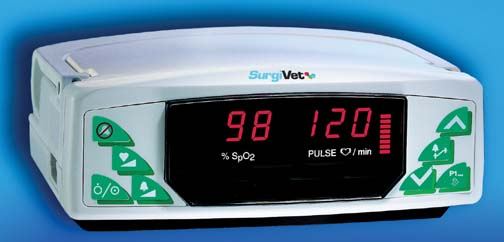1.)

2.)

3.)

4.)

5.)

6.)

7.)

8. Without looking at the gas specified on the vaporizer, how can you tell if it uses Sevoflurane or Isoflurane?
9. How do you connect the EtCO2 monitor up?
10. What is the disadvantage of using the red rubber ET tube?
11. What is the optional hole in the patient-end of the endotracheal tube called?
12. You are monitoring a dog under anesthesia. His jaw tone is moderately tense, what does this mean?
13. How do you measure how far to insert an ET tube?
14. Order of scrubbing if you start with the left hand?
15. What do you do before scrubbing?
16. What do you do after scrubbing?
17. Trace an oxygen molecule through the anesthesia machine for a rebreathing circuit.
18. What are the 3 connections on a non-rebreather connected to?
19. Trace an oxygen molecule through the anesthesia machine when the O2 flush valve is pressed.
20. Pressure on manometer for normal patient breathing (unassisted)?
21. Pressure on manometer when manually ventilating?
22. What is the line that runs down the entire length of the endotracheal tube for?
23. An endotracheal tube has "7.0" on it in large numbers, what does that mean?
24. When intubating a patient, what is the thing you have to push down in order to see the area where the tube goes?
25. What structures (2 of them) do you aim between to get the endotracheal tube into the trachea?
26. What is the hole where the endotracheal tube is pushed down called?
27. More to come!
-------------
ANSWERS
----------------
1. Coles endotracheal tubes
2. Pulse oximeter
3. Laryngoscope
4. ECG
5. Doppler blood pressure monitor
6. Esophageal stethoscope
7. Audio Patient Monitor
8. Iso will go up to 5%, Sevo up to 7 or 8%
9. It goes between the endotracheal tube and the tube from the anesthesia machine
10. If bent it kinks, which would cut off the animal's air supply
11. Murphy eye
12. Nothing unless you have checked it previously and it was more or less tense. Jaw tone can be different for each animal and is only meaningful when you have a previous jaw tone to compare it to.
13. From the nose to the thoracic inlet
14. Left fingertips, left fingers (including thumb), left hand, right fingertips, right fingers (including thumb), right hand, right wrist, left wrist, left forearm, right forearm.
15. Clean under fingernails and wash hands and arms with soap and water.
16. Drop brush in sink, rinse arms fingertips to elbows making sure hands stay above elbows, pick up towel (keep hands above elbows while doing so!), dry left hand, then left wrist and forearm on one half of one side of the sterile towel, then dry right hand, etc on other side and other half of towel.
17. Oxygen tank > pressure regulator > oxygen flow meter > vaporizer > common gas outlet > patient > CO2 absorbent > rebreathed or exhausted out the scavenger or f/air filter.
18. patient, fresh gases, exhaust/scavenger/f/air filter
19. Oxygen tank > pressure regulator > patient
20. 2-3mmHg/4cm H2O
21. 14mmHg, 20cmH20
22. radiopaque marker, allows tube to show up on x-ray in case of swallowing, etc
23. inside diameter is 7.0mm
24. epiglottis
25. vocal folds, arytenoid cartilage
26. glottis
27.
Things to practice:
__ Gloving (open/closed)
__ Suturing (interrupted, uninterrupted/continuous, horizontal mattress, vertical mattress, cruciate/cross mattress)
__ Suture types (absorbable, non-absorbable, mono/multifilament, sizes)
__ Needle types (sizes, shapes, cutting, reverse cutting, tapered)
__ Removing sutures
__ Putting a blade on a scalpel handle/removing it
__ Intubation
__ Charting
__ Cautions
__ Anesthesia planes
__ Audio Patient Monitor
__ Esophageal stethoscope
__ ECG
__ Blood pressure measurements (direct/indirect)
__ Instrument care
__ Endoscope
__ Pulse Oximeter
__ Capnography
__ Coles endotracheal tube
__ Red rubber endotracheal tube
__ Miguel endotracheal tube
__ Murphy-type endotracheal tube
__ Anesthesia machine (VIC, VOC)
__ Non-rebreathing circuit vs rebreathing circuit
__ Laryngoscope
__ Patient monitoring (jaw tone, CRT, mm, HR, RR, femoral/lingual pulse)
__ Reflexes (swallow/gag, pedal, palpebral, corneal)
__ Scrubbing
__ Surgical assisting (handing surgeon instruments, pouring liquid aseptically, handing surgeon syringe w/ needle)
__ Packing (wrapping, labelling, indicator/integrator)
__ Folding (Huck towel, non-fenestrated/fenestrated drape, instruments, gown)
No comments:
Post a Comment